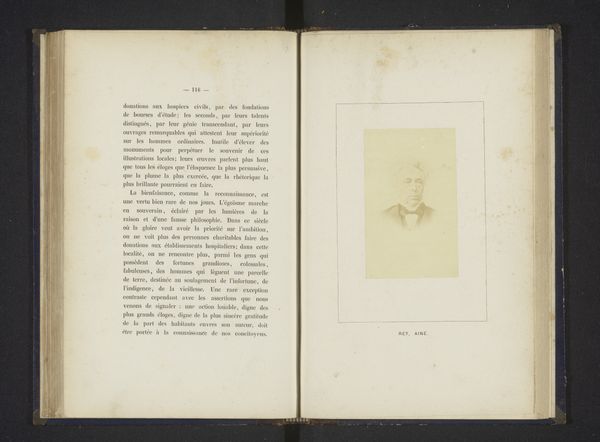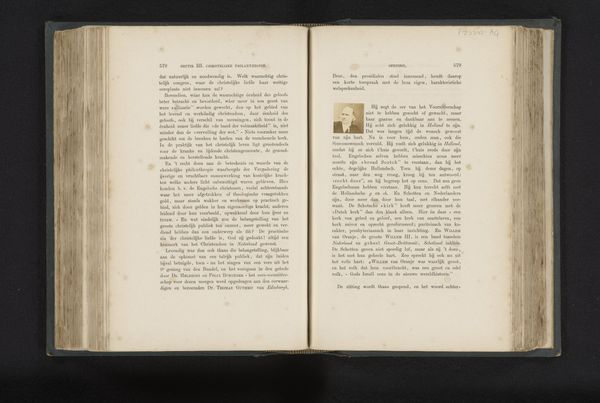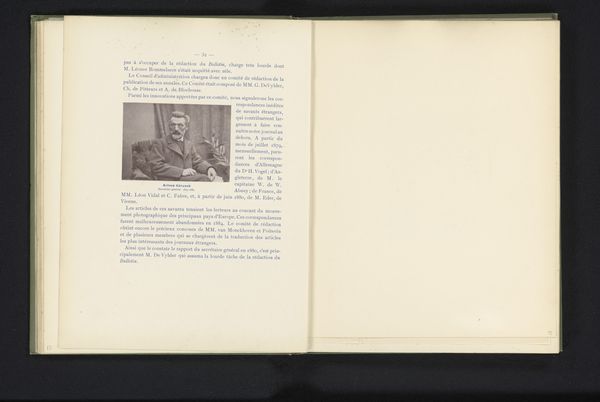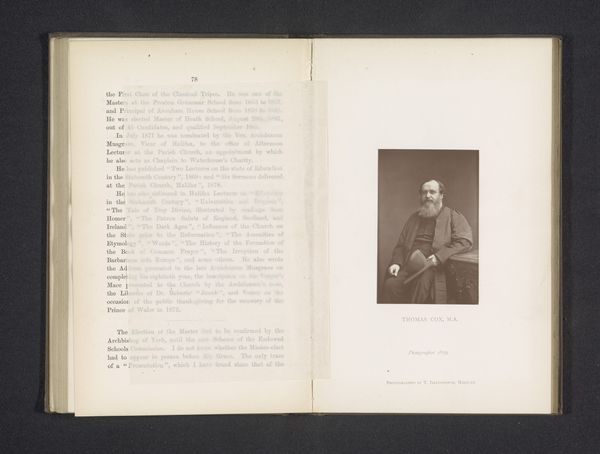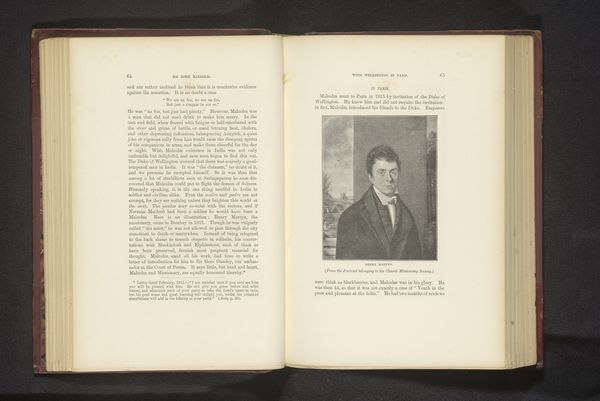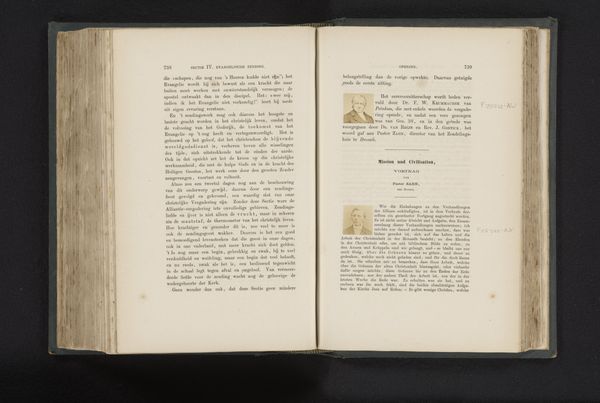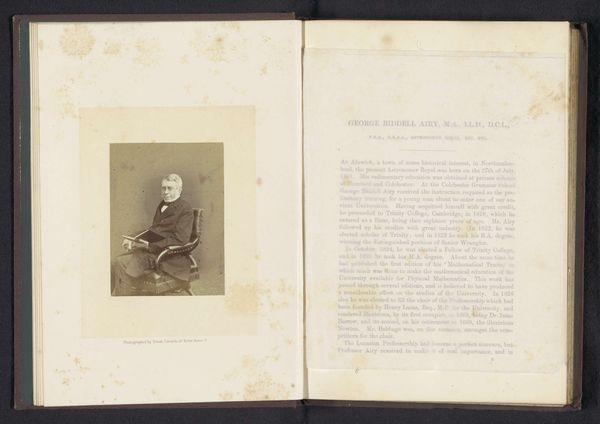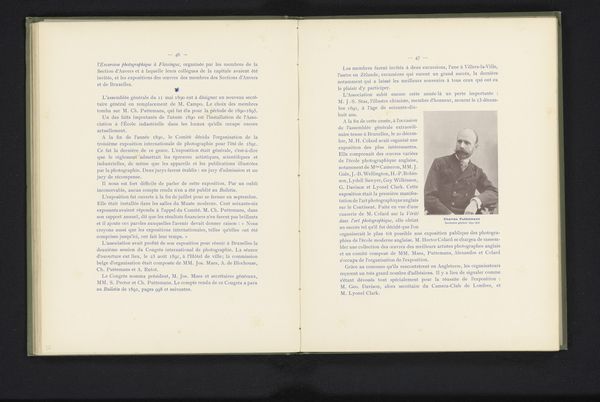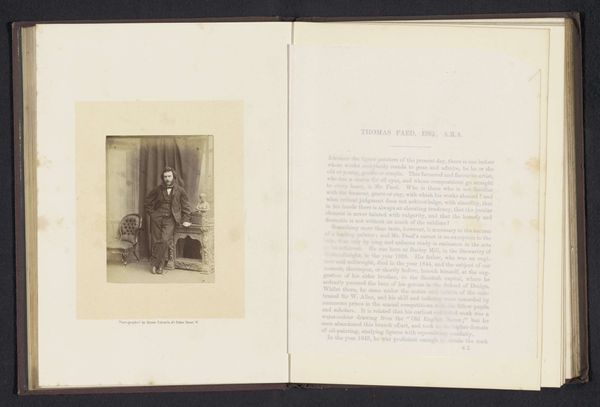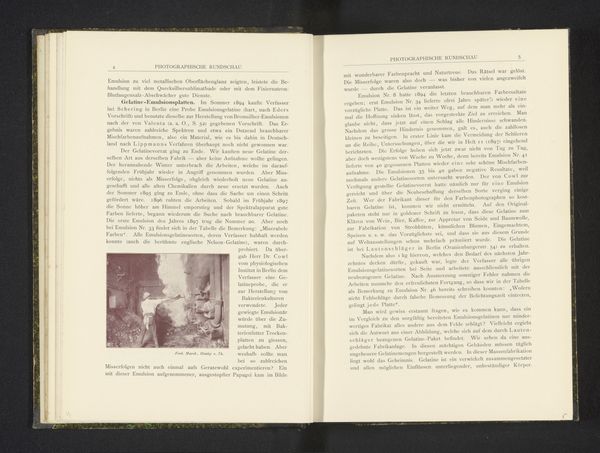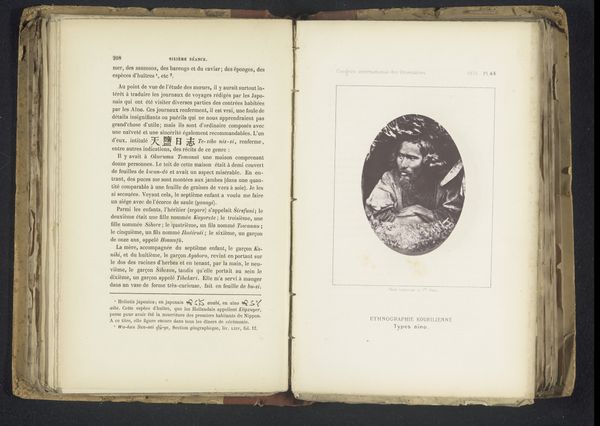
Portret van de heer Lavoignat en de geest van zijn schoonzus before 1874
0:00
0:00
mixed-media, print, photography
#
portrait
#
mixed-media
# print
#
appropriation
#
photography
#
genre-painting
Dimensions: height 87 mm, width 55 mm
Copyright: Rijks Museum: Open Domain
Curator: This fascinating mixed-media piece, dating to before 1874, is entitled "Portret van de heer Lavoignat en de geest van zijn schoonzus"… that’s “Portrait of Mr. Lavoignat and the spirit of his sister-in-law” in English. The image includes photography with, what appears to me, a sort of printed overlay. What’s your initial take on this enigmatic photograph? Editor: Oh, wow. It gives me the chills. It's like seeing two worlds at once – a solid, earthly portrait and something ephemeral trying to break through. The faded edges only add to that sense of mystery and makes me wonder what is going on behind it. Is this some sort of trick or optical illusion or attempt at spirit photography? Curator: Spirit photography was indeed becoming popular around that time, but it was a controversial practice, to say the least. There was, certainly, much skepticism regarding its validity. But what’s key here, I think, is the sitter, Monsieur Lavoignat. As we can infer, he commissioned this portrait precisely to capture, he hoped, his deceased sister-in-law alongside himself, within the photograph’s emulsion. Editor: The article does reference how Monsieur Lavoignat initially recognized immediately "sa belle-soeur, morto depuis longtempes;" (“his beautiful sister, who had been dead a long time"). So it seems that perhaps the whole effect, or at least its perceived effect, depends on one’s initial credulity to, and conviction in, these supposed spiritual phenomena. Curator: Exactly. This work exists within a context of burgeoning spiritualist movements and the broader 19th-century fascination with science, technology, and the unexplained. There’s a clear interplay between emerging technologies such as photography and popular interests in supernaturalism and the desire to commune with spirits. The "print" aspect is most likely the integration of texts referring to the image and associated, or claimed, supernatural elements. Editor: The picture itself has a strangely soothing effect too, despite its eerie subject matter. Perhaps it's because we're so used to seeing images now. But what I am intrigued by is how easily we believe what we *see*. In the old days a camera did not lie, nowadays all we see are lies, and there’s that tension within this piece that speaks volumes, almost literally! Curator: That tension certainly complicates our understanding and invites further questioning of visual culture itself. In the final analysis, I see this piece as a fascinating reflection of a particular moment in social history where the boundaries between science and belief blurred, mediated by technology. Editor: And for me, it’s a poignant reminder of the human desire to connect with loved ones beyond the veil—or at least to grapple with absence, the unknown. Very ghostly.
Comments
No comments
Be the first to comment and join the conversation on the ultimate creative platform.

